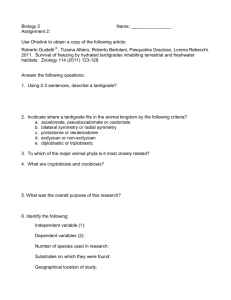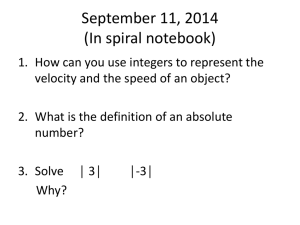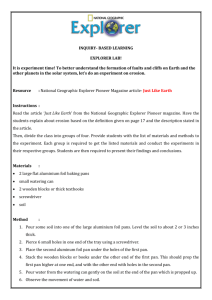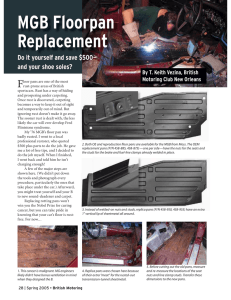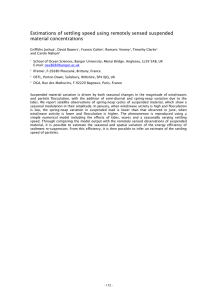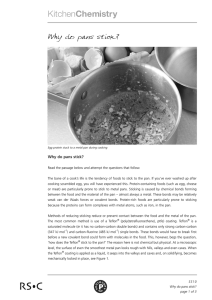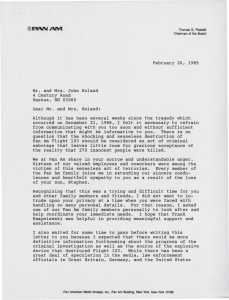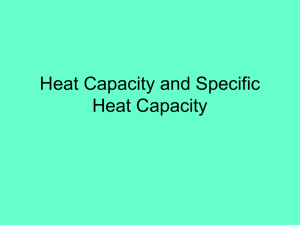bridge feeezes
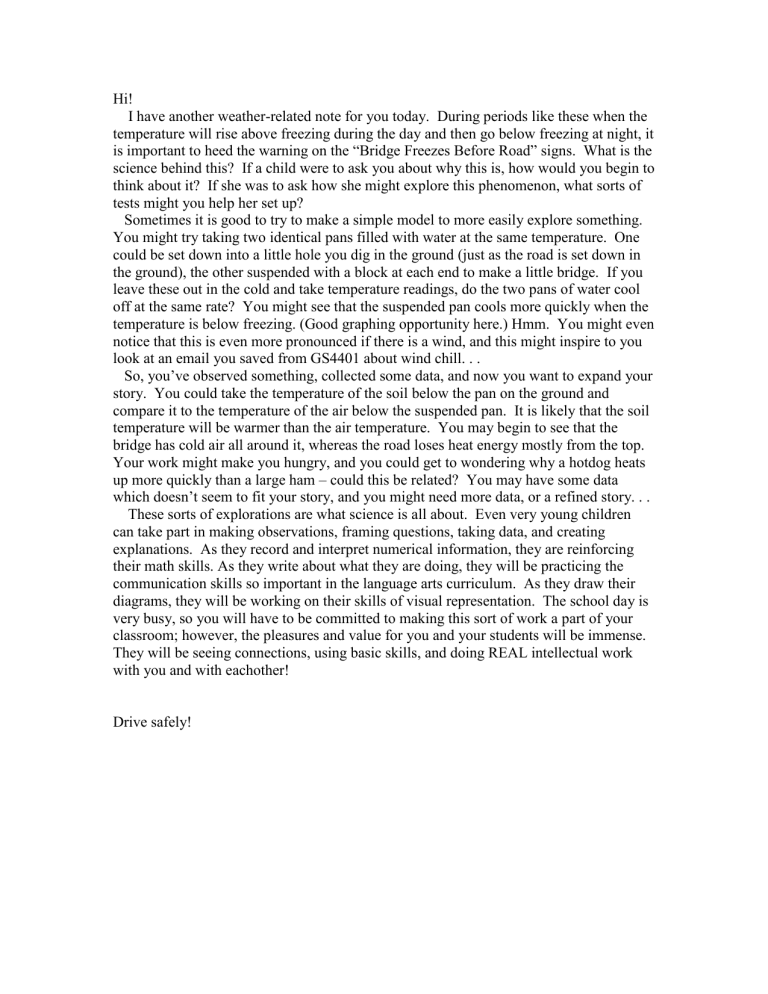
Hi!
I have another weather-related note for you today. During periods like these when the temperature will rise above freezing during the day and then go below freezing at night, it is important to heed the warning on the “Bridge Freezes Before Road” signs. What is the science behind this? If a child were to ask you about why this is, how would you begin to think about it? If she was to ask how she might explore this phenomenon, what sorts of tests might you help her set up?
Sometimes it is good to try to make a simple model to more easily explore something.
You might try taking two identical pans filled with water at the same temperature. One could be set down into a little hole you dig in the ground (just as the road is set down in the ground), the other suspended with a block at each end to make a little bridge. If you leave these out in the cold and take temperature readings, do the two pans of water cool off at the same rate? You might see that the suspended pan cools more quickly when the temperature is below freezing. (Good graphing opportunity here.) Hmm. You might even notice that this is even more pronounced if there is a wind, and this might inspire to you look at an email you saved from GS4401 about wind chill. . .
So, you’ve observed something, collected some data, and now you want to expand your story. You could take the temperature of the soil below the pan on the ground and compare it to the temperature of the air below the suspended pan. It is likely that the soil temperature will be warmer than the air temperature. You may begin to see that the bridge has cold air all around it, whereas the road loses heat energy mostly from the top.
Your work might make you hungry, and you could get to wondering why a hotdog heats up more quickly than a large ham – could this be related? You may have some data which doesn’t seem to fit your story, and you might need more data, or a refined story. . .
These sorts of explorations are what science is all about. Even very young children can take part in making observations, framing questions, taking data, and creating explanations. As they record and interpret numerical information, they are reinforcing their math skills. As they write about what they are doing, they will be practicing the communication skills so important in the language arts curriculum. As they draw their diagrams, they will be working on their skills of visual representation. The school day is very busy, so you will have to be committed to making this sort of work a part of your classroom; however, the pleasures and value for you and your students will be immense.
They will be seeing connections, using basic skills, and doing REAL intellectual work with you and with eachother!
Drive safely!
